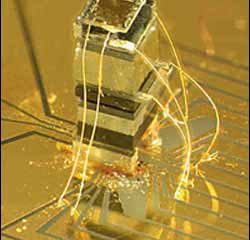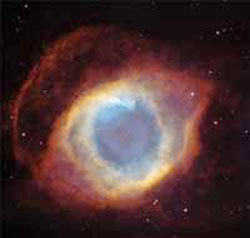This area deals with the fundamental laws and building blocks of nature and how they interact, the properties and the behavior of matter, and research into space and time and their structures.
innovations-report provides in-depth reports and articles on subjects such as astrophysics, laser technologies, nuclear, quantum, particle and solid-state physics, nanotechnologies, planetary research and findings (Mars, Venus) and developments related to the Hubble Telescope.

A low-power, magnetic sensor about the size of a grain of rice that can detect magnetic field changes as small as 50 picoteslas–a million times weaker than the Earth’s magnetic field–has been demonstrated by researchers at the National Institute of Standards and Technology (NIST). Described in the Dec. 27 issue of Applied Physics Letters,* the device can be powered with batteries and is about 100 times smaller than current atom-based sensors with similar sensitivities, which typically wei

The European Space Agency’s Huygens probe was successfully released by NASA’s Cassini orbiter early this morning and is now on a controlled collision course toward Saturn’s largest and most mysterious moon, Titan, where on 14 January it will make a descent through one of the most intriguing atmospheres in the solar system to an unknown surface.
The separation occurred at 02:00 UTC (03:00 CET): A few minutes after separation, Cassini turned back to Earth and relayed back informati

A new astronomical camera has begun operations on the United Kingdom Infrared Telescope (UKIRT) in Hawaii. The Wide Field Camera (WFCAM), built at the UK Astronomy Technology Centre (UK ATC), Edinburgh, is the world’s most powerful infrared survey camera. It will survey large regions of the sky at infrared wavelengths and is expected to discover both the nearest objects outside our Solar System and the farthest known objects in the Universe.
WFCAM has the largest field of view

The Weizmann Institute of Science today announced that a research group headed by Dr. Ernesto Joselevich has developed a new approach to create patterns of carbon nanotubes by formation along atomic steps on sapphire surfaces. Carbon nanotubes are excellent candidates for the production of nanoelectronic circuits, but their assembly into ordered arrays remains a major obstacle toward this application.
The team was initially researching in a different direction: they were trying

One of the nearest and brightest planetary nebulae has a surprisingly complex 3-D structure
In a process comparable to that of an artist who turns a two-dimensional canvas into a three-dimensional work of art, astronomers use the two dimensional images that they capture in their high-powered telescopes to reconstruct the three-dimensional structures of celestial objects.
The latest example of this reconstructive artistry is a new model of the Helix Nebula–one of the nea

A massive eruption of atomic oxygen from Saturn’s outer rings, seen by Cassini’s ultraviolet camera as the spacecraft neared its destination, may be an indication that the planet’s wispy E ring is eroding so fast that it could disappear within 100 million years if not replenished.
Cassini’s Ultraviolet Imaging Spectrograph (UVIS) detected the oxygen atoms spewing into a huge cloud on the dark side of Saturn’s rings as Cassini prepared to enter orbit around